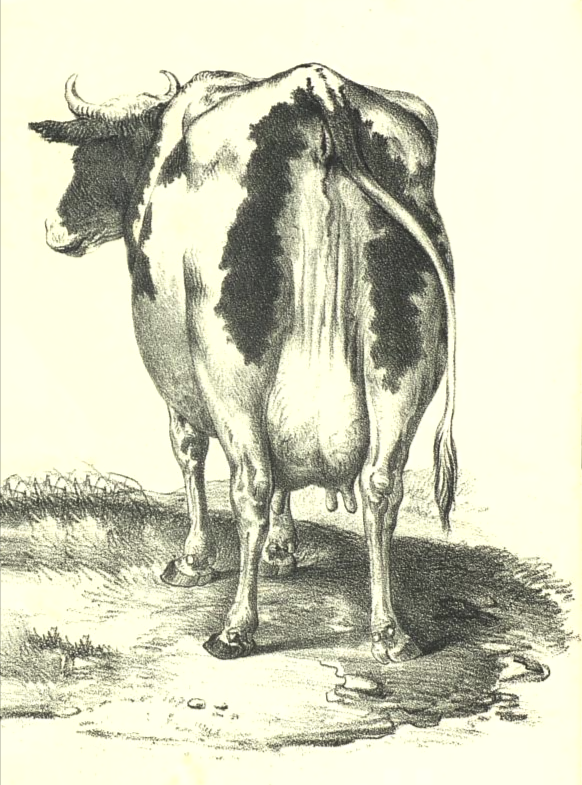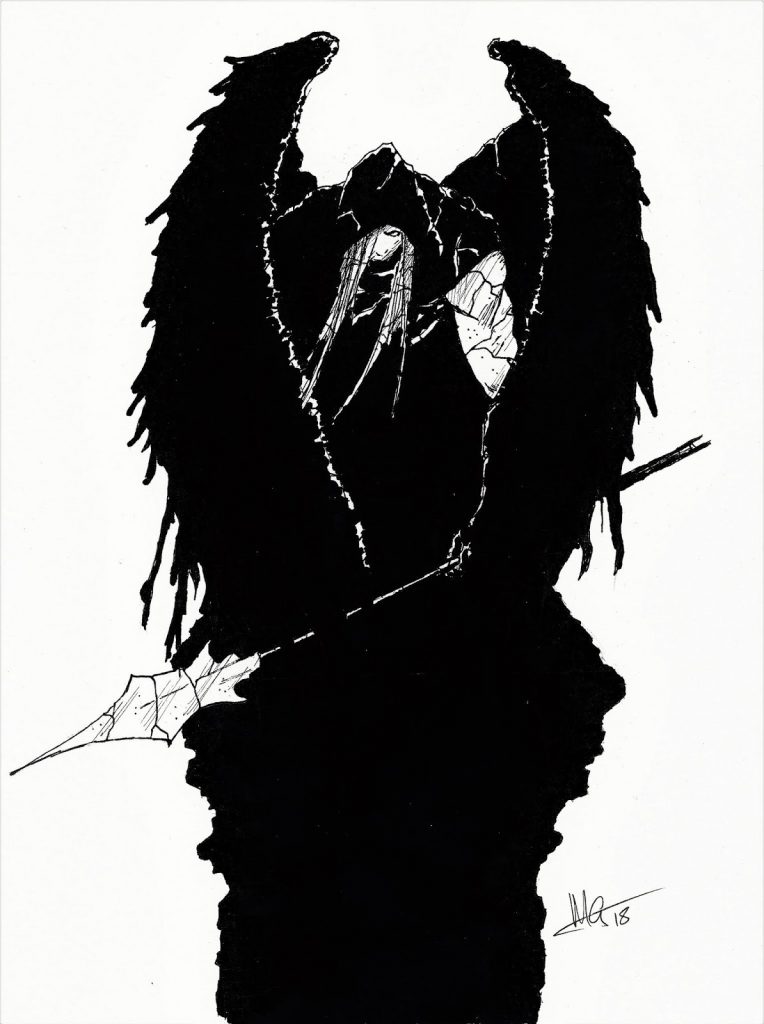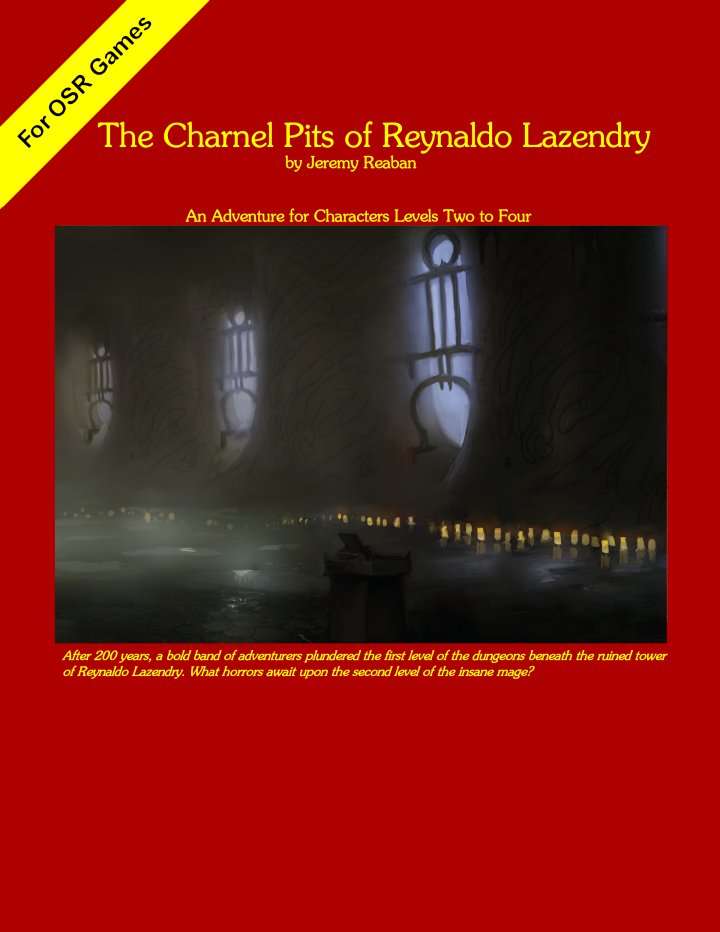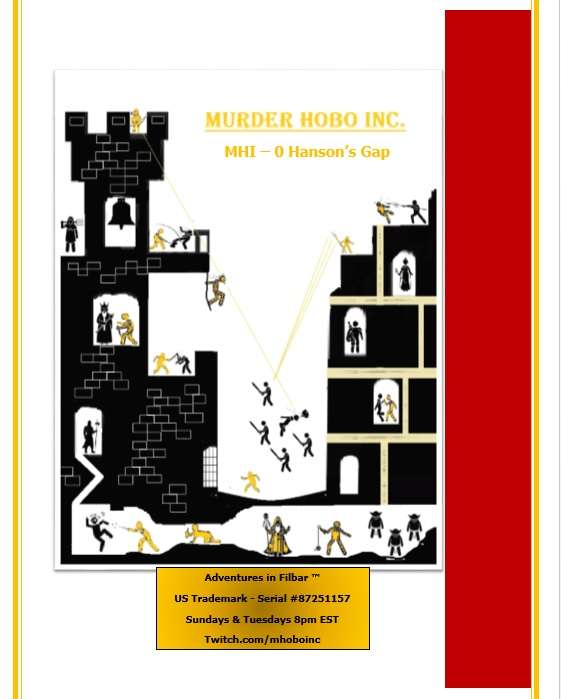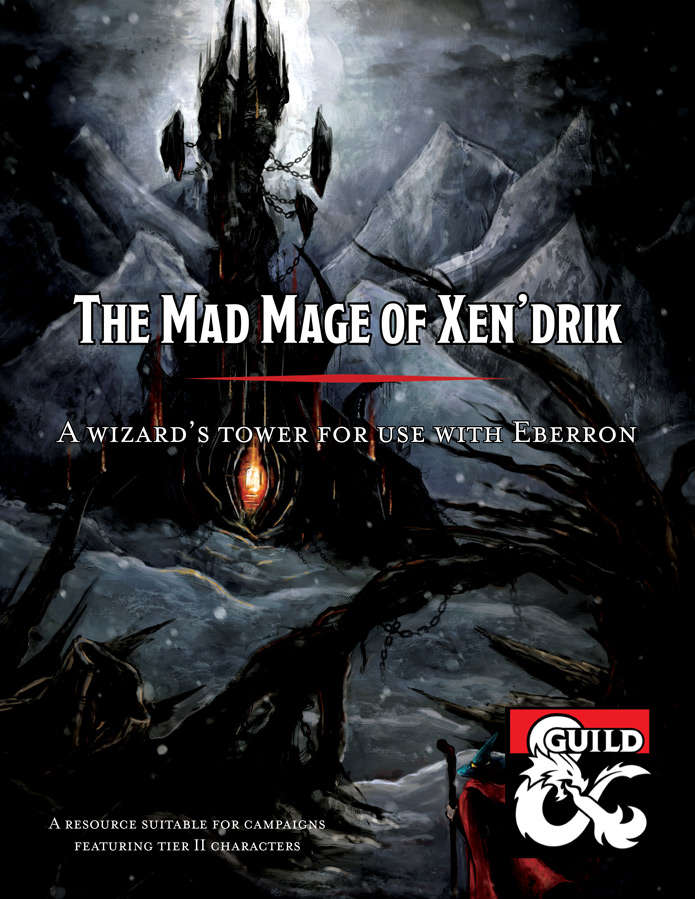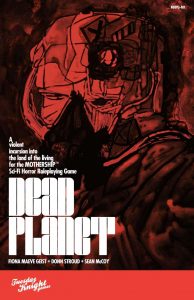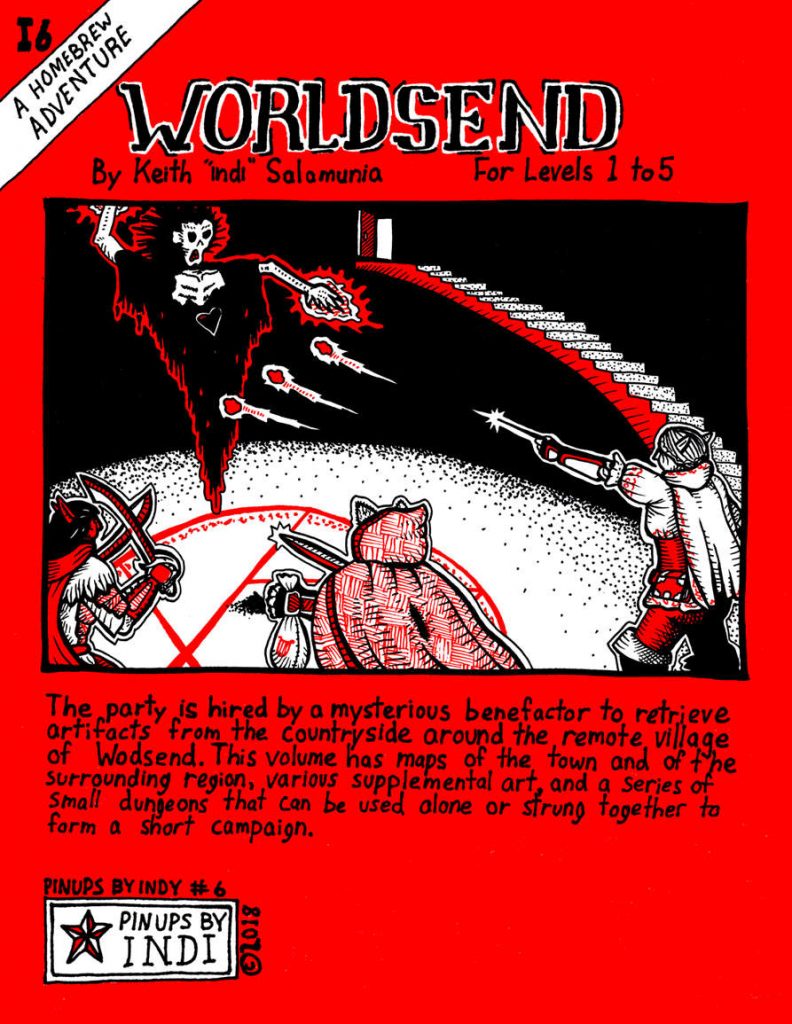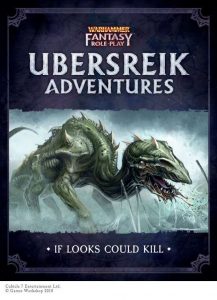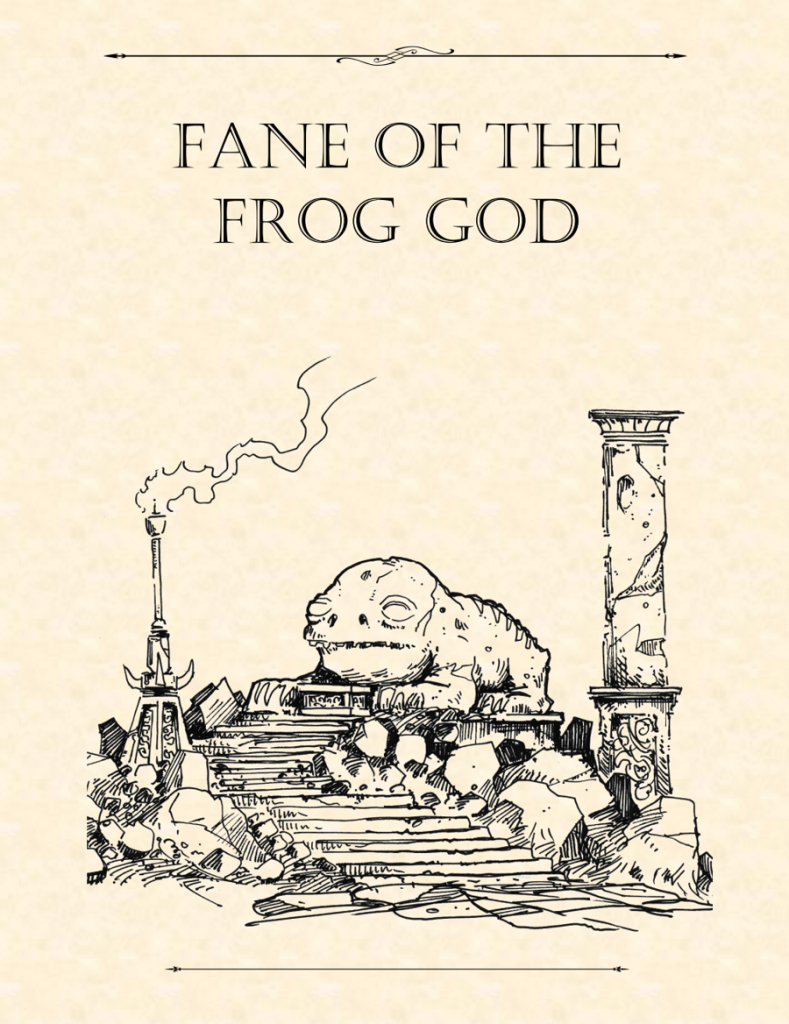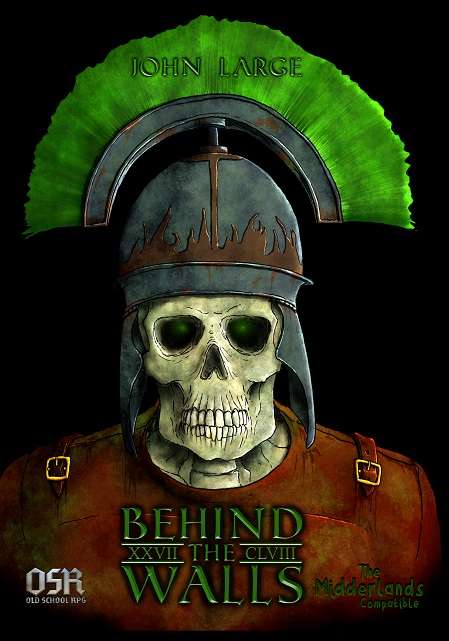
- By John Large
- Monkeyblood Design
- Swords & Wizardry
- Levels 1-4
Ebeneezer Garbett, a local farmer from the mushroom-filled valley village of Otterdale, returned to the hamlet with tales of riches he had found. Now, no-one has seen him since, and he villagers are becoming ill with a strange fungal infection.
This 49 page adventure has the party getting to trouble with a fungus creature in a small village. A good overview and some evocative writing is buried in text that could use some better organization to tighten up the important bits to make them stand out. A nice open-ended adventure, small, but with repercussions ala LotFP.
John hangs out at reddicediaries, his blog, and published Murder Knights of Corvendark, a nice weird little adventure that needed a bit more. This adventure feels smaller and more intimate, in spite of the page count. Set in his Miderlands, a kind of England-ish setting, this one one is right on the border with his version of Scotland. Some farmer found some Goman gold after some heavy rain, now he’s disappeared, people are dying from a sickness, and an adventuring company (! Not adventurers! A company! I love the nod to mercenary that makes this more dirt-farmer than the magical ren-faire connotations that Adventurer has!) that looked in to the coins has disappeared.
Certain elements of this harken back to The Thing and Invasion of the Body Snatchers, with a fungus creature, interconnected colony creatures, and some explicit notes to make it more Pod Person like. It’s not overdone and it related to Thing and Body Snatchers in the way that they are folklore; not really gonzo explicit but more remembrances of a theme that influences how you, as DM or player, relate to the content. That’s the kind of stuff I like, the leveraging of other themes or content to bring more than the writing itself does.
The ending of this has, probably, the giant fungus creature dragging itself up from its small underground vault and heading toward the village, probably caused by or at least witnessed by the party. This feels like an adventure climax without it feeling forced, and it a kind of gentler LotFP apocalyptic ending if the creature escapes. This harkens back to Rients and his Broodmother advice or really fucking up your campaign world, and the explicit advice (in a paragraph) handles the guidelines on the greater world well if the party Oops it up. Plague masks, movements of people to drier areas less likely to fungus up … it’s good imagery.
And there’s a decent amount of good imagery in this combined with JUST enough nods to realism that it feels real, without slipping in to simulationist nonsense. The rumor tables are in voice, which adds richness to the NPC’s. There’s a feast getting ready to go off in the village, in celebration of the new found wealth flowing in from the farmer and adventuring company. A locale of humid mists, lanterns during the day, a valley alive with encounters. Tendrils growing through a door to the creature on the other side and ancient metal weapons missing their wood … it having been absorbed by the fungus creature. A little adventure overview in the beginning kind of ties everything together and orients the D on what’s to come. The fungus creature has bits of bone, gold, skulls, etc visible on its surface as it attacks while its minions try to infect rather than kill. A richness of detail in combat AND outside of combat.
But …
The art and maps, while well done from an imagery standpoint, suffer from usability issues .. .mainly the numbered locations fading in to the map. Pretty map, but I don’t want to fight it to find the numbers.
I can also complain about several smaller things. A location, seen from far off, isn’t really dealt with until you’re right up on it. ANY time the party is outside the designer needs to pay attention to what they see in the distance. It’s that Fallout 4 thin of seeing a red glow in the night that draws you to go explore there. “Oh, uh, yeah, I know it’s night and everything, but, everything is on fire.” Well, how about telling us that as we approach instead of hiding it in the room 3 description? [That’s not an example from this adventure. In this one I’m talking about a prominent jagged outcropping that isn’t dealt with, well, from a visibility standpoint until your on top of it.] Further, the main farmstead is covered in two separate description locations in different parts of the book, NPC cross-references are haphazard, at best, and an NPC summary sheet, with location, personality, sickness, etc, is sorely missing. The investigation portion is largely social, and social adventures need different resources than room/key exploration adventure sections. The wanderers could really use some personality also. They are a cut above minimal, but not by much. A little personality in the NPC or situations would bring them to life.
It’s also very weird that the fungus is mentioned, in one place, as being highly flammable, but fire is not mentioned as a weapon against the fungus creature or its minions.
The major flaw, though, and what keeps this from a Best Of list, is the mixing of interesting details in to long text blocks. There are some great details in this but they are lost in the text presented. The descriptions and flavor are rich and, while not Failed Novelist long, picking up the pertinent details out of the text blocks is is not easy. The mist in the valley. The mold and mushrooms everywhere. The lamps lit in the day … these deserve bullet points or bolding in their paragraphs. The idea is that the DM reads it once before play and then, during play their attention is drawn to the bullets or bolding and they say “oh, yeah, that thing …” and they include it in their description to the players. This happens over and over again. I would say that it has the scenes set well, for the initial read through, but doesn’t support the DM well, at all, during actual play. Bolding, bullets, summary sheets. What do I, the DM, need RIGHT NOW as I’m running it, and can I find it easy?
This is $5 at DriveThru. The only preview is a “Quick” one, meaning you don’t get a chance to see the content at all, just a hint of the (quite nice) layout. [And rare shout out by me to the person who did the interior layout and art. I know nothing about thatshit, but it looks nice.]
https://www.drivethrurpg.com/product/261303/Behind-The-Walls

